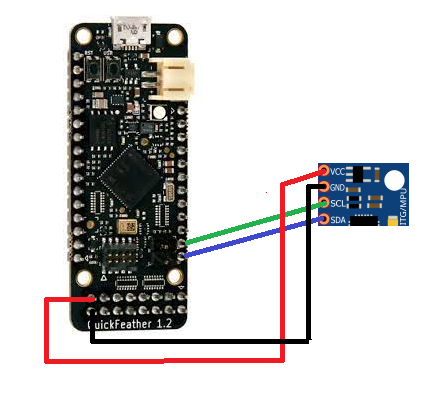.71% of Earth covered by water and any change in climate is directly/indirectly related to water resources either no rain,Acid rain,Glob Warming.Our system create a network that monitors both water resources and environment humidity,temp, pressure,wind dir,air pressure and ML Model create a analytics and try to learn and find the relation between the how change in environment , water resources quality and level of water affect the climate and how these responsible for flood, climate uncertainty, acid rain drought and gives us the prior alert about these climate change.
Our solution have a central device that have different sensors like flow sensor, turbidity sensor, gyro sensor , acc sensor, humidity sensor , water flow sensor , wind dir and speed sensor and many other sensors and take data of each and then device create a analytics and using AI and ML it figure out the relation between each other and learns to predicts the climate change. if device detect the water level in sea rises and the the water quality also got decreased due to factory emission then can detect the cause of acid rain in that area. Or if the device detect the sudden increase in temperature of environment and rise in sea level and then increase in humidity near sea then it relate all those and detect the cause of flood or heavy rain fall and tell the rsie in environment temp cause the glaciers melt down this leads to the rise in sea level and this sea level rise and high temperature creates hight water evaporation causing the high humidity and the high evaporation and cloud formation case heavy rainfall and flood. So in this way the device monitors water resources and environmental change and create ML and analytics to alert about possible climate change. The devices features to take real time data of both Water and Land and Creates the analytics and gives it to us or can be connected into cloud or create a mesh network to study environment.It can find he relations various changes in water and environment to predict the possible climate change . The Quick feather have build in pressure sensor, Acc sesor , microphone with different pheperials like I2C a, Uart , SPI that make us possible to attach other sensors and use builtin sensor like microphone to measue sea waves noise , ACC and pressure sen to detect the water waves height and other sensor attached to to measure other different water and environment data and is capable of running AI and ML models and easy to implement algorithms make us possible to make perfect climate change predictive device.
Creating Device PluginFirst we need to edit the .ssf file for our quick feather board so that we can get the new sensors data that we will add to the device . The documentation of HOW TO ADD NEW I2C sensor is quite long so I recommend you to see the given link to know how to add extra sensor to Quickfeather .
After preparing .ssf file for adding new sensor . Connect the sensor to I2C pin of quick feather board and solder them together as shown in pic below.
Now login into the SensiML then download the data capture lab and create a new project here I am using AIClimate as name of project. Then add the custom device plugin that we have made in .ssf file
and select the property and sensor name to capture the data here I am using multi sensor to capture the pressure ,height, humidity and other data
Then either capture the data of environment using sensors here we are using the onboard pressure ,and motion sensor of quick feather and external I2C sensors to get the height and pressure and temperature and humidity. Here we need the motion and pressure sensor for getting sea levela and motion of waves on sea . when we enclosed device air filled container then the motion of waves get captured by motion sensors the device float on sea water and rise and fall with sea waves and we use these collected data of waves to get the relation between the climate change like when the weather get stormy , when the tide comes how it affect climate and then we mix this data to predict the stromy weather and climate change.Next capture the data of environment like change in temperature , air pressure, humidity , height of sea level with same process as in above tutorial says and then save these datasets in csv. Now import those data sets .
Next we will select the sensor data and then select the reason for leveling and then level them with the environmental change factor to make the ML model learn and get trained here we have 4 levels for different climate change summer, stormy summer , spring , cold , stormy cold. In datasheets graph we will add the new tracks for each parameters like humidity, pressure, temperature, height
Now we will select segments in graph and level them here in summer environment we high temperature and pressure due to flow of warm air and cold air replacement so we select that segment as summer then we have normal range temperature with normal moderate pressure and humidity so we will label them as spring season and the in cold season we have low temperature in environment wile we have high air pressure and low air pressure with different height so we will label those segment as cold and other as cold stormy climate. For labeling first we will create new levels then we will select the segment and edit them and select the right label for that segment.
Now we have to save the changes then we click on project explorer and then will open the motion sensor data sets to detect the sea waves during the climate change and different seasons. Here for high sea waves we have high disturbance in x,y,z axis of motion sensor and also the z axis value rise with increase in height of wave so we will create the segments and label them according the season change. suppose we got a high wave during the summer season due to night breeze and or due to other factor then we will mark that segment as "windy summer", if we got high storm and high waves in cold due to climate change then we will label them as "Stormy Cold ". So that our ML model get trained and find and predict the upcoming storm, tides or change in climate by making sense from there data and label After labeling each segment we will save the changes and project.
After this go to analytics studio and then we prepare the data and ML (Follow the instructions form getting started with SensiML tutorial ).
Now go to build model and then set the parameters and options for model and the create the model and go to explore the model and after that test the created model.
Now go to download the model and then select the board as Quicfeather and then download them as .bin file .After that setup the file in Quickfeather board using the instructins and Congrats our AI climate change system is ready.
Now put the device in container where it can float on sea waves and other on different area where the device captures waves motion to predict the climate change and predict about storm and cold , windy summer and other climate change using the data from sensor.
What Next?Next we can expand the project to various sensor nodes having the sensors like Air quality sensor , Gas sensor, Rain Sensor, Wind meter sensor, Water flow sensor and these sensor nodes data will be transmitter to quick feather board and then we can use the data in research and climate change prediction and find the relations like how the Emission chemical waste in water affect the climate. It will find the relation between the emission rate of pollutants and degrading air quality cause the Acid Rain or if the percentage of CO2 sensed by device is increased from usual condition and the temperature rises due to this then it predicts the cause for long summer and low sea level and cause of heavy rainfall wile drought in some area.
No other solution available yet that can monitor both environment and water and create real time analytics to find the relation and affect of change in water and environment predicts possible climate change . But this concept helps helps us in study of climate change to predicts flood , acid rain , or chance of heavy rain throughout year.









Comments
Please log in or sign up to comment.